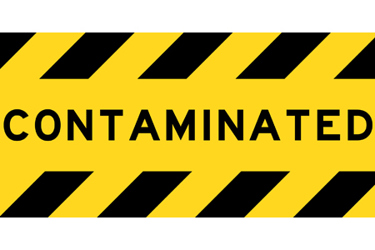All You Need To Know About Contamination Control Strategies, Part 1
A conversation with Vanessa Figueroa, Rebecca Brewer, and Greg Gibb, Quality Executive Partners

In the first of this two-part series, microbiology and contamination control specialists Vanessa Figueroa, Rebecca Brewer, and Greg Gibb, Ph.D., discuss best practices in developing contamination control strategies through the lens of the newly formalized provisions in the EU GMP Annex I, Manufacture of Sterile Medicinal Products. Figueroa is Quality Executive Partners' (QxP's) executive director of microbiology and sterility assurance, Brewer is QxP's vice president of strategic practices, and Gibb is an independent consultant for QxP.
Why all the buzz around contamination control strategies (CCSs)? Is this a new regulatory requirement?


What is the WHY behind a CCS?
Figueroa: The most important WHY behind the development of a contamination control strategy is to understand where there are contamination risks in a process, and ultimately the product, but more importantly why mitigating those risks will ensure that only high-quality, safe product is released to the market. If you do not understand where the sources of potential contamination in your facility, process, and materials are coming from, you are not in the correct position to mitigate them. We must know what types of contamination are possible, how they could get into our processes, how they could proliferate, and the best ways to remove/reduce/prevent their presence. Contamination could show up in any aspect of our process, which could lead to material waste, lengthy investigations, batch rejection, regulatory action, and even market recalls. None of this is good for business, and it is certainly not good for public health. Therefore, each company must understand why it is important to develop this type of strategy, and how to stay compliant by reinvesting in better controls to reduce risk from any type of contamination to our processes.
Gibb: I think this is the most important question for an organization to answer before they even begin to build the elements. If they do not get this one right, it becomes merely an exercise in compliance, and the real value of assessing and controlling the facility to prevent, monitor, and investigate contamination is lost. As Vanessa indicates, it is that recognition of the importance of technical strength, patient safety, and business reputation that establishes the WHY.
What types of contamination should we be most concerned about in this type of document? Do the contamination types depend on the dosage form?
Gibb: This is one of those trick questions, isn't it? Contamination, by definition, is never acceptable. Design a strategy that ensures that the product is always safe to be used for all designated applications.
Figueroa: I'm with Greg, and so this is easy; all that apply! When people think about contamination, and especially as a microbiologist, we first think microbial contamination. While microbial contamination should be considered, there are many other types of contamination that must be included in the assessment to determine if they do in fact "apply". For sterile products, the focus is on contaminants such as endotoxin, pyrogens, and non-viable particulates in addition to the viable microbial contaminants. Depending on the process or other types of products, it may also make sense to consider viral contaminants, mycoplasma, and even cross-contamination from other product formulations manufactured on the same line or that use shared processing equipment. Do not take it for granted that someone reading your CCS will know your process and all the potential contaminants in that process (microbial or otherwise), so be sure to explain why or why not a specific type of contamination is being evaluated.
Are CCSs required for every type of pharmaceutical/biopharmaceutical drug product, or just sterile products? Does it apply to drug product only or also to drug substance? What about critical starting materials or excipients? Lastly, what about devices for combination products?

In some cases, it may be shown that a specific product, material, or device does not support microbial growth. This important attribute of the material should be included in the risk assessment that is used to develop the controls for the CCS. Ideally this factor should be supported by data (e.g., water activity less than 0.6 aw, manufacturing process that is inhibitory to growth, historical test results) so it's possible to identify both the appropriate controls based on the strength of the data and the basis for the risk mitigation to enable assessment of future changes.
It is tempting when thinking of CCS to think of microorganisms and endotoxin as significant adventitious agents – and with a focus that is solely on "sterile" products, those might be the first contaminants that spring to mind. However, there are other contamination sources that should also be considered entering and within our facility, including cross-contamination from other products, particulate, viral contamination, mycoplasma contamination, prion contamination, and DNA contamination. Ensuring that our processes are robust in minimizing and eliminating (where possible) all potential sources of contamination is essential.
We shouldn't limit our thinking about CCS. With a focus on whether CCS applies to specific classes of materials, we are in danger of losing sight of the fact that CCS also applies to our facility design and technical (engineering) solutions within our facility. While the materials we handle will influence the content of our CCS, so should the ways in which we handle materials. Key processes that help to mitigate our risks include cleaning, sterilization, depyrogenation, as well as process filtration. Key engineering controls that help to mitigate our risks include air handling and room classification, differential pressures, dust control, environmental controls, vent filtration, and containment. Programs such as pest control should also be included in a well-rounded program, as insects and mammals that might find their way into our facility's nooks and crannies can also bring with them a host of different contaminants.
Activities that are prone to introduce contaminants to the environment commonly occur when materials are opened, sampled, or transported. Materials can easily contaminate a room or equipment or might themselves become contaminated during these actions. Therefore, procedures and equipment for these functions should be evaluated to reduce risks at these vulnerable process points. Appropriate gowning, containment, cleaning, and disinfection before, during, and after the activities are important control measures. Monitoring of the environment or materials themselves can help to demonstrate that the controls employed were successful in reducing risks. However, controls (proactive, active) and monitoring (reactive, passive) should not be thought of as equivalent, although both play a significant role in an effective CCS. In short, facilities of all types and all product types would benefit greatly from a well-supported, risk-appropriate CCS when the CCS focuses on protecting product quality and safety.
Gibb: When we answer this question with the intention of only being compliant, I feel like we are missing the value of the process to ensure that our product is safe – free of contamination. Understandably, the perspective of compliance with the regulations is important, but do not let that overshadow the process of applying overall operational excellence to contamination risks.
Stay tuned for the second half of this conversation delving into the elements typically found in a CCS, who in your company is responsible for developing the CCS, and more in "All You Need To Know About Contamination Control Strategies, Part 2."
About The Experts:
Vanessa Figueroa is the executive director of microbiology & sterility assurance at Quality Executive Partners, Inc. (QxP) and the owner, chief microbiologist at VVF Science. During her almost 20 years in pharmaceutical quality, she has built a deep knowledge of microbiology and contamination control. Figueroa was one of the co-creators of the QxP Virtuosi learning platform. She is an active and publishing member of several professional organizations, such as the PDA, American Society of Microbiology, and Association for Women in Science.
Becky Brewer is vice president of strategic practices at Quality Executive Partners, Inc. (QxP). She has more than 35 years of pharma experience in the areas of quality, compliance, and continuous process improvement. She has held numerous positions within the pharma industry, specializing in cleaning validation and engineering, process validation, production controls, and manufacturing. Brewer was one of the architects and co-creators of the QxP Virtuosi learning platform. She serves on the PDA's Scientific and Advanced Therapy Medicinal Product Advisory Boards as well as contributing to a number of Technical Reports and Points to Consider and is a frequent instructor for both ISPE and PDA.
Greg Gibb, Ph.D., microbiology, is an independent consultant for Quality Executive Partners, Inc. (QxP) and brings with him more than 30 years' experience leading pharmaceutical/biotechnology partners to FDA compliance in operations. His expertise and experience focus on aseptic processing, quality control, quality auditing, change control, and GMP. Gibb has served in both technical and management roles in API and drug product production processes in the U.S. and internationally.
